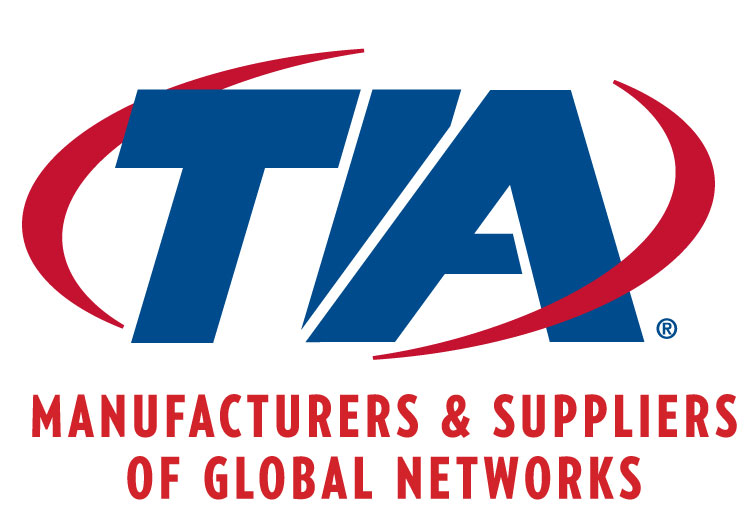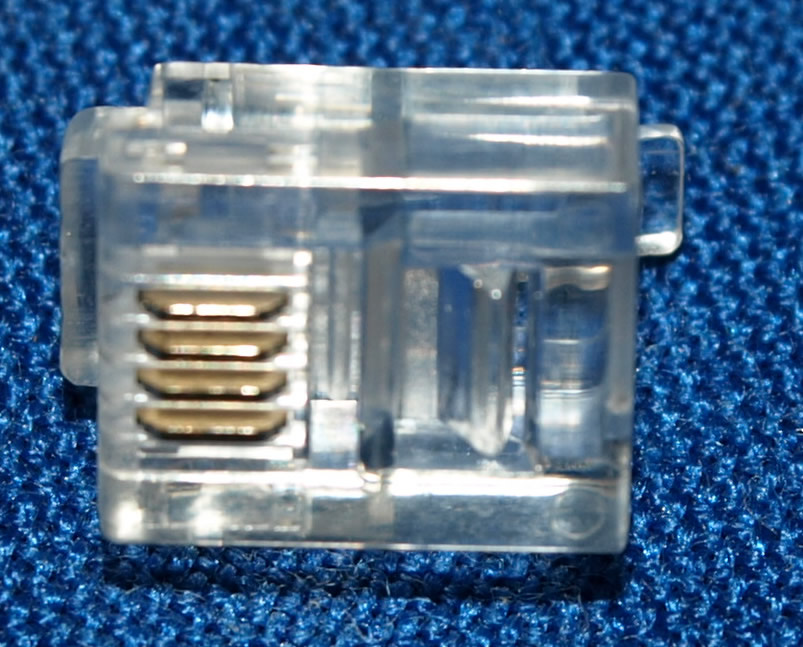|
Registered Jack
A registered jack (RJ) is a standardized telecommunication network interface for connecting voice and data equipment to a service provided by a local exchange carrier or long distance carrier. Registration interfaces were first defined in the ''Universal Service Ordering Code'' (USOC) system of the Bell System in the United States for complying with the registration program for customer-supplied telephone equipment mandated by the Federal Communications Commission (FCC) in the 1970s. They were subsequently codified in title 47 of the Code of Federal Regulations Part 68. Registered jack connections began to see use after their invention in 1973 by Bell Labs. The specification includes physical construction, wiring, and signal semantics. Accordingly, registered jacks are primarily named by the letters ''RJ'', followed by two digits that express the type. Additional letter suffixes indicate minor variations. For example, RJ11, RJ14, and RJ25 are the most commonly used interfaces ... [...More Info...] [...Related Items...] OR: [Wikipedia] [Google] [Baidu] |
Telephone Plug
A telephone jack and a telephone plug are electrical connectors for connecting a telephone set or other telecommunications apparatus to the telephone wiring inside a building, establishing a connection to a telephone network. The plug is inserted into its counterpart, the jack, which is commonly affixed to a wall or baseboard. The standards for telephone jacks and plugs vary from country to country, though the 6P2C style modular plug has become by far the most common type. A connection standard, such as RJ11, specifies not only the physical aspects of an electrical connector, but also the signal definitions for each contact, and the pinout of the device, i.e. the assignment or function of each contact. Modular connectors are specified for the registered jack (RJ) series of connectors, as well as for Ethernet and other connectors, such as 4P4C (4 position, 4 contacts) modular connectors, the de facto standard on handset cords, often improperly referred to as ''RJ connectors''. ... [...More Info...] [...Related Items...] OR: [Wikipedia] [Google] [Baidu] |
MPOE
In telephony, the demarcation point is the point at which the public switched telephone network ends and connects with the customer's on-premises wiring. It is the dividing line which determines who is responsible for installation and maintenance of wiring and equipment—customer/subscriber, or telephone company/provider. The demarcation point varies between countries and has changed over time. ''Demarcation point'' is sometimes abbreviated as demarc, DMARC, or similar. The term MPOE (minimum or main point of entry) is synonymous, with the added implication that it occurs as soon as possible upon entering the customer premises. A network interface device often serves as the demarcation point. History Prior to Federal Communications Commission (FCC) regulations separating the ownership of customer premises telecommunication equipment from the telephone network, there was no need for a public standard governing the interconnection of customer premises equipment (CPE) to the ... [...More Info...] [...Related Items...] OR: [Wikipedia] [Google] [Baidu] |
ISDN
Integrated Services Digital Network (ISDN) is a set of communication standards for simultaneous digital transmission of voice, video, data, and other network services over the digitalised circuits of the public switched telephone network. Work on the standard began in 1980 at Bell Labs and was formally standardized in 1988 in the CCITT "Red Book". By the time the standard was released, newer networking systems with much greater speeds were available, and ISDN saw relatively little uptake in the wider market. One estimate suggests ISDN use peaked at a worldwide total of 25 million subscribers at a time when 1.3 billion analog lines were in use. ISDN has largely been replaced with digital subscriber line (DSL) systems of much higher performance. Prior to ISDN, the telephone system consisted of digital links like T1/ E1 on the long-distance lines between telephone company offices and analog signals on copper telephone wires to the customers, the " last mile". At the time, the ne ... [...More Info...] [...Related Items...] OR: [Wikipedia] [Google] [Baidu] |
Tip And Ring
Tip and ring are the two conductors or sides of a telephone line. Their names are derived from the telephone plugs used for connecting telephone calls in manual switchboards. One side of the line is connected to the metal ''tip'' of the plug, and the second is connected to a metal ''ring'' behind the tip, separated and insulated from the tip by a non-conducting material. When inserted into a jack, the plug's tip conductor connects first, followed by the ring conductor. In many European countries, tip and ring are referred to as the ''A'' and ''B'' wires. Neither of the tip and ring conductors is permanently connected to earth ground, but may be connected to ground during signaling operations. Typically, the ring conductor has a direct current (DC) potential of to with respect to the tip conductor when the line is in the on-hook (idle) state. Floating both conductors, not referencing either one to ground, minimizes the pickup of hum from any nearby alternating current (AC) power ... [...More Info...] [...Related Items...] OR: [Wikipedia] [Google] [Baidu] |
8P8C
A modular connector is a type of electrical connector for cords and cables of electronic devices and appliances, such as in computer networking, telecommunication equipment, and audio headsets. Modular connectors were originally developed for use on specific Bell System telephone sets in the 1960s, and similar types found use for simple interconnection of customer-provided telephone subscriber premises equipment to the telephone network. The Federal Communications Commission (FCC) mandated in 1976 an interface registration system, in which they became known as registered jacks. The convenience of prior existence for designers and ease of use led to a proliferation of modular connectors for many other applications. Many applications that originally used bulkier, more expensive connectors have converted to modular connectors. Probably the best-known applications of modular connectors are for telephone and Ethernet. Accordingly, various electronic interface specifications exi ... [...More Info...] [...Related Items...] OR: [Wikipedia] [Google] [Baidu] |
Key Telephone System
A business telephone system is a multiline telephone system typically used in business environments, encompassing systems ranging in technology from the key telephone system (KTS) to the private branch exchange (PBX). A business telephone system differs from an installation of several telephones with multiple central office (CO) lines in that the CO lines used are directly controllable in key telephone systems from multiple telephone stations, and that such a system often provides additional features related to call handling. Business telephone systems are often broadly classified into key telephone systems, and private branch exchanges, but many hybrid systems exist. A key telephone system was originally distinguished from a private branch exchange in that it did not require an operator or attendant at the switchboard to establish connections between the central office trunks and stations, or between stations. Technologically, private branch exchanges share lineage with centra ... [...More Info...] [...Related Items...] OR: [Wikipedia] [Google] [Baidu] |
6P6C
A modular connector is a type of electrical connector for cords and cables of electronic devices and appliances, such as in computer networking, telecommunication equipment, and audio headsets. Modular connectors were originally developed for use on specific Bell System telephone sets in the 1960s, and similar types found use for simple interconnection of customer-provided telephone subscriber premises equipment to the telephone network. The Federal Communications Commission (FCC) mandated in 1976 an interface registration system, in which they became known as registered jacks. The convenience of prior existence for designers and ease of use led to a proliferation of modular connectors for many other applications. Many applications that originally used bulkier, more expensive connectors have converted to modular connectors. Probably the best-known applications of modular connectors are for telephone and Ethernet. Accordingly, various electronic interface specifications exist f ... [...More Info...] [...Related Items...] OR: [Wikipedia] [Google] [Baidu] |
Modular Connector
A modular connector is a type of electrical connector for cords and cables of electronic devices and appliances, such as in computer networking, telecommunication equipment, and audio headsets. Modular connectors were originally developed for use on specific Bell System telephone sets in the 1960s, and similar types found use for simple interconnection of customer-provided telephone subscriber premises equipment to the telephone network. The Federal Communications Commission (FCC) mandated in 1976 an interface registration system, in which they became known as registered jacks. The convenience of prior existence for designers and ease of use led to a proliferation of modular connectors for many other applications. Many applications that originally used bulkier, more expensive connectors have converted to modular connectors. Probably the best-known applications of modular connectors are for telephone and Ethernet. Accordingly, various electronic interface specifications exist ... [...More Info...] [...Related Items...] OR: [Wikipedia] [Google] [Baidu] |
Telecommunications Industry Association
The Telecommunications Industry Association (TIA) is accredited by the American National Standards Institute (ANSI) to develop voluntary, consensus-based industry standards for a wide variety of Information and Communication Technologies ( ICT) products, and currently represents nearly 400 companies. TIA's Standards and Technology Department operates twelve engineering committees, which develop guidelines for private radio equipment, cellular towers, data terminals, satellites, telephone terminal equipment, accessibility, VoIP devices, structured cabling, data centers, mobile device communications, multimedia multicast, vehicular telematics, healthcare ICT, machine to machine communications, and smart utility networks. Active participants include communications equipment manufacturers, service providers, government agencies, academic institutions, and end-users are engaged in TIA's standards setting process. To ensure that these standards become incorporated globally, TIA i ... [...More Info...] [...Related Items...] OR: [Wikipedia] [Google] [Baidu] |
Administrative Council For Terminal Attachments
A registered jack (RJ) is a standardized telecommunication network interface for connecting voice and data equipment to a service provided by a local exchange carrier or long distance carrier. Registration interfaces were first defined in the ''Universal Service Ordering Code'' (USOC) system of the Bell System in the United States for complying with the registration program for customer-supplied telephone equipment mandated by the Federal Communications Commission (FCC) in the 1970s. They were subsequently codified in title 47 of the Code of Federal Regulations Part 68. Registered jack connections began to see use after their invention in 1973 by Bell Labs. The specification includes physical construction, wiring, and signal semantics. Accordingly, registered jacks are primarily named by the letters ''RJ'', followed by two digits that express the type. Additional letter suffixes indicate minor variations. For example, RJ11, RJ14, and RJ25 are the most commonly used interfac ... [...More Info...] [...Related Items...] OR: [Wikipedia] [Google] [Baidu] |










